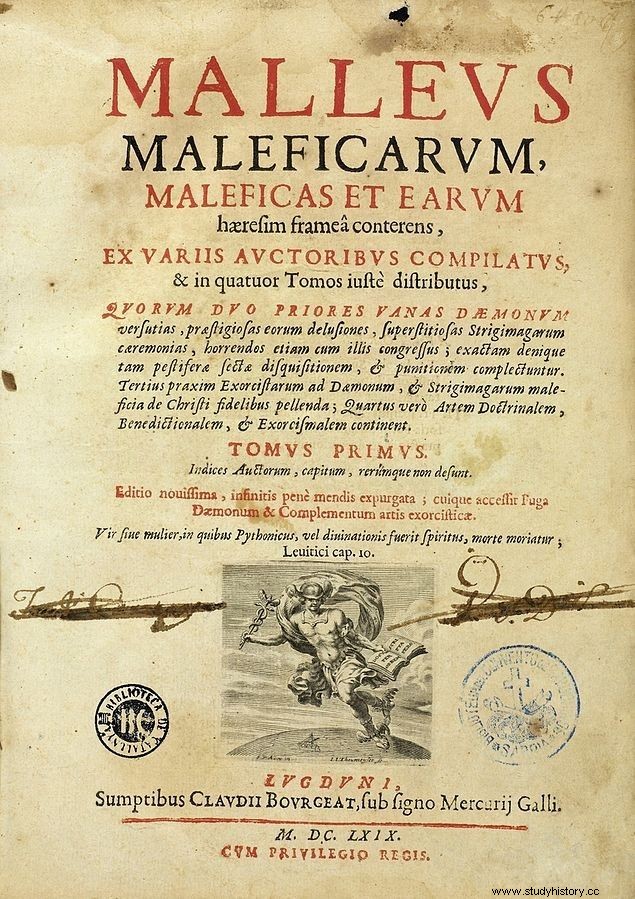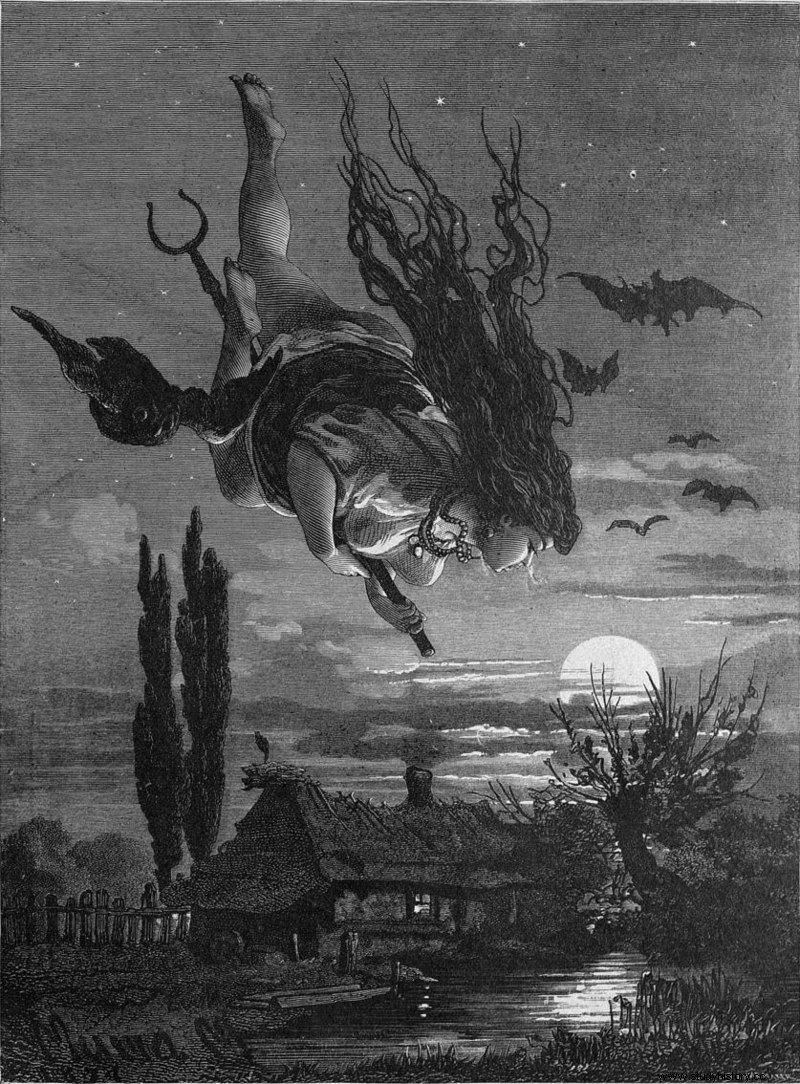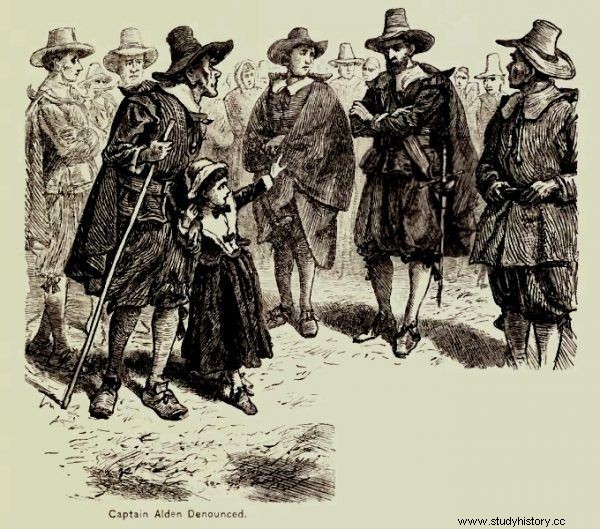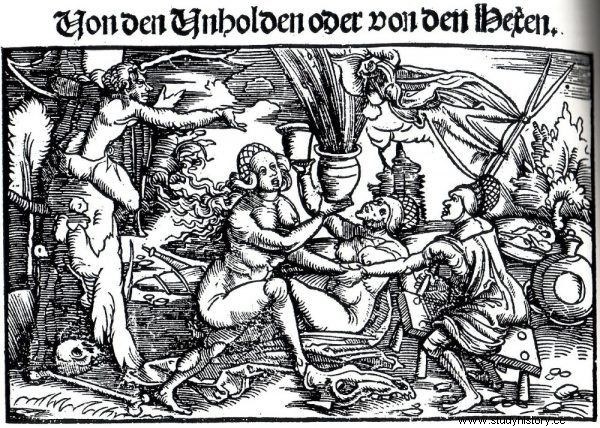The list of alleged sins of witches was long. From common ones like poisoning cattle or making it rain, to really weird ones - like making tasty cheese or forcing cows to ... jump. Admittedly, the accusers did not lack fantasy. What were the most bizarre allegations?
At first, slanders about dealing with the devil were treated rather leniently. In the 10th century, it was believed that people who thought they could fly or claimed to have seen a neighbor do it fell victim to their own exuberant imaginations.
"Until the 13th century, the official position of the Church was that the actions of witches were an illusion created during dreams" - emphasizes Małgorzata Pilaszek, who studied witchcraft trials in Poland - "As a result, belief in their actual existence was pagan and as such was heresy ”.
Word catch
Over the years, however, the situation has turned 180 degrees. On the threshold of the modern era, no one questioned faith in black magic anymore, and the inquisition, called to fight heretics, specialized in prosecuting those responsible for practicing it. The catalog of crimes against which someone could be accused also expanded.
In the first years of hunting, the main accusations were disloyalty to God and heretical devil worship - hence the night sabbaths, during which witches worshiped and fellowship with their master. But as early as in the 16th and 17th centuries, witches were blamed for casting spells on cattle, spoiling milk or beer, and ... male impotence, allegedly caused by the wife giving her husband menstrual blood .

The famous "Hammer for Witches", title page (photo:Wellcome Images, license CCA 4.0 I)
At the height of the hunt for the devil's servants, gossip was enough to bring him to court. As reported by Jean-Michel Sallmann:
For this suspicion, very little was enough:every case of death, illness, accident, adverse event (...) was attributable to spells.
( ...) ostentatious church attendance, having a rosary with a broken cross etc.Even praying, therefore, could not protect against unfair accusation - and this despite the fact that it was believed that witches could not say the Our Father! For if the prayer was deemed not to be sincere and merely intended to "confuse the eyes" of the witnesses, the trial became almost certain.
Bad beer, dancing pots and jumping cows
What complaints in the sixteenth and seventeenth centuries were examined by church and secular courts that had to decide about the guilt or innocence of a woman suspected of practicing black magic? The list of offenses is long - and on many points even bizarre.

Witches were accused, among other things, of using charms to take away the fertility of animals, poison the wells with powder made from human bones and spread the plague by applying a special ointment to the door handles and walls of houses . In addition, they could allegedly turn into cats and, in this form, murder babies and scratch their eyes. Some reportedly turned into werewolves as well - attacking travelers, immune to torture and ... unable to cry.
These accusations, however, sound quite "reasonable" compared to the accusations made against the alleged witches overseas. In the book "Witches. Salem 1692 ”Stacy Schiff mentions a whole host of their alleged "crimes":
They melted oxen, made cows jump four feet up, threw saucepans into the fire, threw hay from carts. It was their fault that the beer became stale, the buckets tipped over, the kettles were dancing. Witches also liked to throw apples, chairs, hot coals, candles and dung. They disseminated various disembodied creatures around the area, for example a being that was almost completely invisible except for a human head and a white cat's tail .

The witch in 19th-century Russian illustration (photo:public domain)
And that's not all! Witches could also - of course, according to the denuncials - stay in several places at the same time, walk noiselessly on creaking boards and ... make unusually good cheese. Perhaps they were helped by their extremely acute sense of smell - apparently they could smell figs in someone else's pocket !
Of course, the men were also accused of witchcraft. However, it happened much less often, and besides, the accusations against warlocks were of a slightly different nature.
They were mostly suspected of practicing higher forms of magic, such as alchemy or the use of Nigromancy books. Although, of course, there were also more "down-to-earth" offenses, such as ... stealing a rope from a church bell (which was supposed to ensure prosperity in trade).
Gruesome practices
In addition to "common" crimes, such as maligning neighbors or manipulating the weather, the repertoire of witches, according to their accusers, also included a number of serious crimes. The authors of "Hammer for Witches", Jakob Sprenger and Heinrich Kramer, warned:"And there is no bodily disease that witches, with God's permission, could not cause, be it leprosy, or cadmium, or another major disease."

The girl names Captain Alden as a sorcerer during the trials in Salem (photo:public domain)
The devil's handmaids, disguised as midwives, allegedly cursed babies to offer them to Satan, or - in a more drastic version - killed babies right after birth. Anyway, they had an interest in the latter. If they managed to catch the toddler before the baptism, they obtained the necessary ingredient for perhaps the most macabre recipe in their books . As Sprenger and Kremer describe in horror:
They make ointment from the members of children, especially those killed by them, according to satanic teachings, which they paint on a stool, or wood, which, having done:they are immediately taken to the air, so in the daytime as in the night they are visible, and if he wishes blindly, for Satan with the veil that covers them.
As you can see, these two inquisitors definitely did not consider flying an illusion or a pipe dream. And the fact that it was difficult to see the witch in the sky, they explained that the devil made women invisible. They have embellished their witch-hunter textbook with a whole host of "real-life" examples.
Among other things, they reported in detail the incidents that allegedly happened in the city of Waldshut, when its inhabitants did not invite a certain witch to a wedding. Hungry for revenge, the woman summoned Satan and asked him to help her chase away the wedding guests. As we read in "Hammer for Witches":
Satan allowed, and taking it in the air (which some herdsmen looked at) upstairs, lying near the city, and admitted as sweating when water was not supposed to be poured into the hole, Whom she has done in the city of water, urinated in the city of water and stirred with her finger according to Satan's manner. Satan, therefore, at once lifted that humidity upwards, a very great hail, like stones, over the dancing and only sent down that town .
The punishment for sins
For so opposing God and making these so-called maleficia there could only be one punishment:death, although - contrary to popular belief - not all witches died at the stake . Men and women convicted of practicing witchcraft in Salem in 1692 were hanged.
Interestingly, admitting guilt (which was the crowning evidence in witchcraft cases in Europe) in 17th-century America resulted in his release. In Salem, 18 people were sentenced to death who insisted on their innocence or were "recidivists" - for example, the daughters of women previously suspected of dealing with the devil.

An image of a witches' coven (photo:public domain)
The real "sins" of the alleged witches were quite different. Stacy Schiff in the book "Witches. Salem 1692 ” emphasizes that the mutual accusations that sparked a spiral of violence in the Puritan town were neighborhood conflicts and jealousy . Well, someone denounced someone because of the dispute over the land, someone was worse off, and still others had… nightmares. As this Pulitzer Prize-winning author points out:
They all had nerves like ropes. Witchcraft made it possible to express local fears, just as the fear of nuclear war favored Maccartism in the 1950s. Even those who knew they were innocent believed in a devilish plot.
The same was probably the case of Dorota Gnieckowa, sentenced to death in Poznań in 1544, whose story is recalled by Małgorzata Pilaszek:“she was able to undo brewing spells, protect against hail, find treasures, identify thieves and cool down love affections. The crowning achievement of her skills was stealing milk and "drying" people, for which she was eventually burned.
In the 18th century, the witch-hunt ended almost as suddenly as it had begun. However, isolated cases of witchcraft accusations happened even in the 20th century - according to some researchers, it was caused by the spread of belief in vampires. But that's a completely different story.
Bibliography:
- Nigel Cawthorne, Witches and witches. History of persecution , Bellona 2006.
- Heinrich Kramer, Jakob Sprenger, Witches Hammer , Szymon Kempini Printing House 1614.
- Małgorzata Pilaszek, Trials for witchcraft in Poland in the 15th-18th centuries , Universitas 2008.
- Jean-Michel Sallmann, Witches. Satan's Bride , Dolnośląskie Publishing House 1994.
- Stacy Schiff, Witches. Salem 1692 , Margins 2019 .
Check where to buy "Witches. Salem, 1692 ”:
